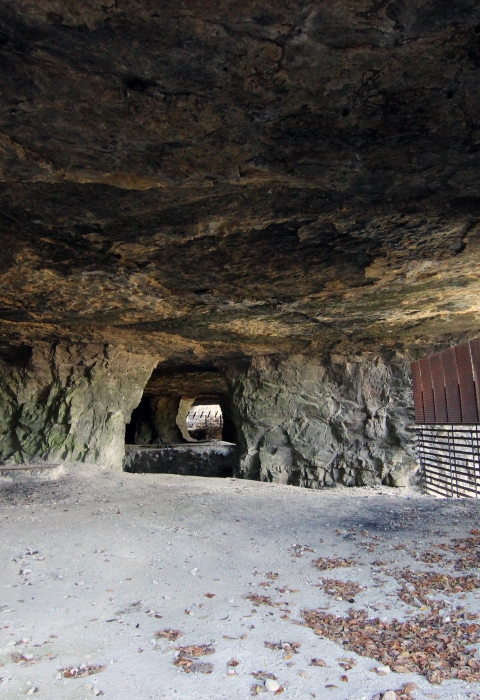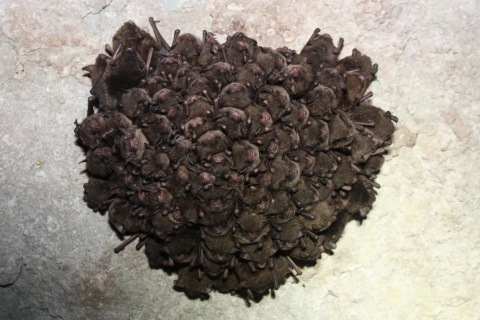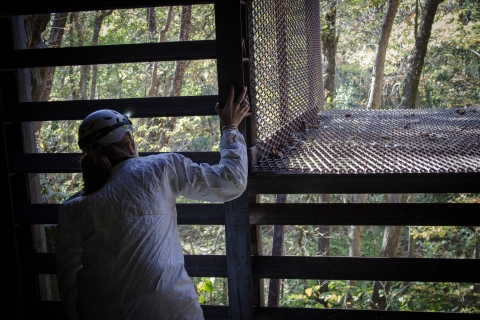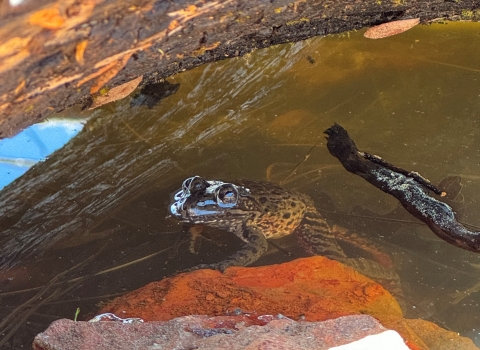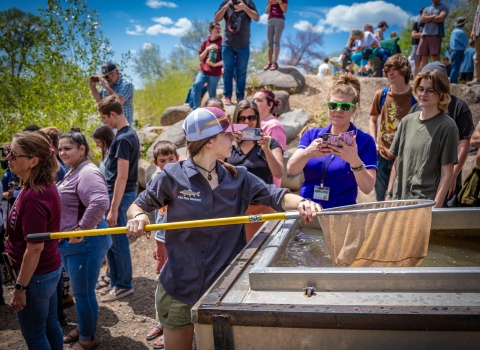In 2012, before endangered Indiana bats were discovered at an abandoned limestone mine in Hannibal, it was thought that the species wintered in Missouri only south of the Missouri River. Scientists believed the Missouri population of Indiana bats was about 13,000. But with the discovery came the realization that the maze of tunnels beneath the hilly landscape along the Mississippi River harbored upward of 168,000 Myotis sodalis, making Hannibal home to the world’s largest hibernation site for the rare bat.
Partners jumped into action to protect the 185-acre site. Hibernating bats are extremely vulnerable to disturbance during hibernation, and the abandoned mine was a magnet for unauthorized adventure seekers who drove vehicles through passages, lit fires and even took occasional shots at bats clustered on the ceilings. The City of Hannibal, Missouri Department of Conservation, Iowa Natural Heritage Foundation, The Conservation Fund and the U.S. Fish and Wildlife Service teamed up to acquire the property for the city as a park – protecting the bats and providing a new outdoor recreation site for Hannibal residents.
Sodalis Nature Preserve was dedicated as a city park and a haven for bats. Managed by City of Hannibal, the park protects hibernating bats in the former mine with bat-friendly gates at 33 mine entrances. The specially designed gates allow bats to enter and leave but prevent would-be adventurers from entering and disturbing the bats. Outside the mine, the park provides walking, hiking and biking for visitors among the hills around the hibernation site.
Hannibal has expanded the park, adding a small adjacent parcel of land that will help control ATV use in the area. An extension of the popular Bear Creek Trail provides a paved path on level terrain for walkers who aren’t able to tackle the hills around the park. Both improvements showcase of the City of Hannibal's commitment to managing the site for recreation, bat conservation and public safety.
Meanwhile, inside the mine, scientists counted nearly 182,000 Indiana bats in early 2019 as part of the biennial count of Indiana bats throughout their range, which extends from the northeastern United States to western Missouri and eastern Oklahoma. That’s down from the 2017 count, likely due to the impacts of white-nose syndrome, a disease that is killing many cave-hibernating bats. It is estimated that Sodalis Nature Preserve supports about a third of all Indiana bats, along with numbers of endangered gray bats, threatened northern long-eared bats, and other species.
